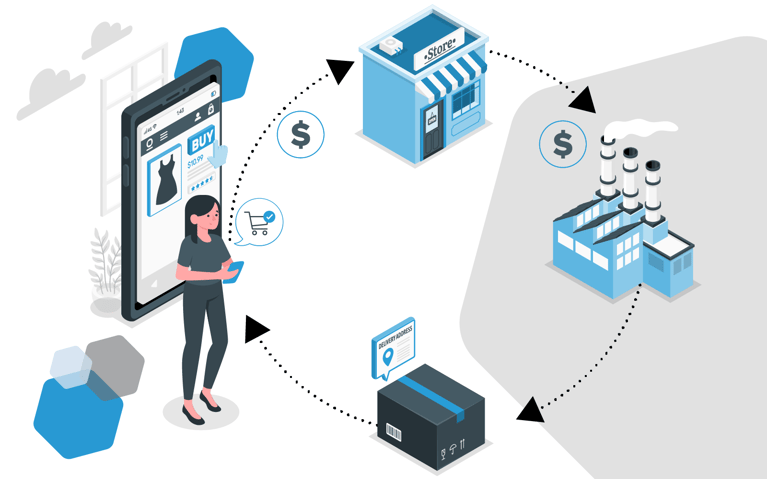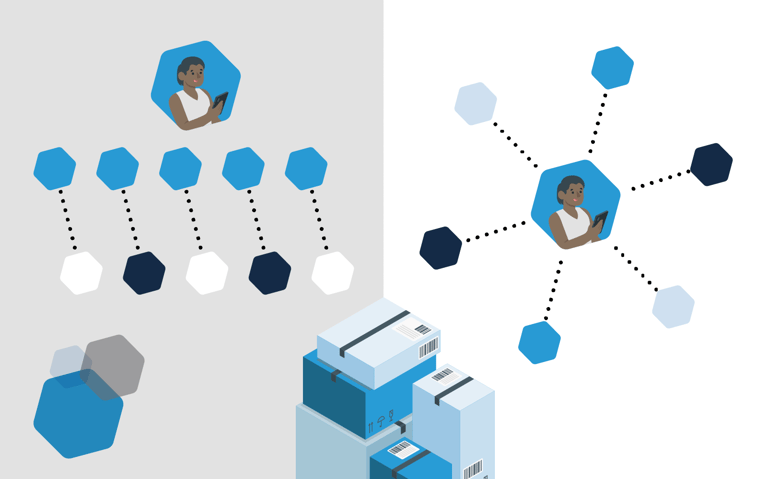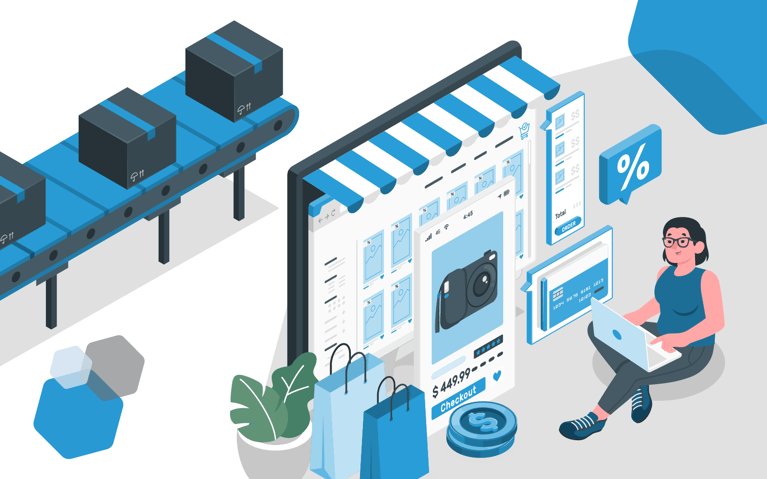Last year, ecommerce sales topped 1 trillion dollars for the first time. Although growth has slowed in the aftermath of the pandemic, ecommerce is still trending upward. Digital shopping gives consumers flexibility: the ability to shop from their own homes, enjoy free delivery, buy now, pay later (BNPL) and even buy online, pick up in store (BOPIS), knowing that their product will be there waiting for them.
The industry’s growth has changed customer expectations – and shined a spotlight on the need for 3PLs. With consumers demanding low to no-cost shipping and swift delivery times (even same-day), 3PL services have become a necessity for fulfillment, logistics and facilitating shorter last-mile delivery.
Multi-node fulfillment networks are one tactic businesses use to meet customer delivery expectations. A multi-node strategy offers a solution for brands seeing a demand to deliver more quickly than competitors.
What are nodes?
A node is a location that receives, fulfills and ships orders. This includes distribution centers, fulfillment centers or retail stores that handle fulfillment. In other words, a node is a point in the supply chain where inventory can be stored or managed.
Orders are routed to nodes based on delivery type, proximity to the customer, shipping costs and inventory allocation. The number of nodes in a network can boost flexibility and allow brands to offer their customers multiple delivery options and ways to receive their purchases faster.
How does a multi-node network work?
Multi-node fulfillment increases the number of locations a brand uses to fulfill and ship orders instead of operating out of a single distribution center. Businesses create a strategy that increases speed and operational efficiency by optimizing inventory management and shipping processes.
The goal is to spread inventory across multiple locations in a way that fulfills orders more efficiently and cost-effectively. But also in a way that reduces the delivery timeframe. The strategy looks at:
- What locations can serve a high density of customers.
- What locations can fulfill orders in the fastest timeframe.
- What locations maximize cost savings and reduce carbon emissions.
When does multi-node fulfillment make sense?
Not every business needs a multi-node strategy. However, some clear signs and demands highlight that it’s time to implement a multi-node strategy. For example, when:
Customers are demanding rapid delivery and frictionless returns
Today’s customers shop in a multitude of ways. And they want better inventory visibility and fulfillment options that suit their needs. While shopping in person should still be an option, they want digital shopping to provide that same convenience.
You need your inventory closer to customer hubs
As brands scale, it’s crucial to understand how your last-mile delivery affects costs and timeframes. Fulfillment strategies that worked before may not now, meaning you may need to move away from centralized fulfillment and implement a strategy that accounts for your growth and expansion of your customer base.
Multi-node fulfillment reduces logistics challenges
It’s no secret that the supply chain has run into some issues over the past few years. It’s likely, too, that there will continue to be unexpected challenges. Resilient brands will fare better. They’ll have a strategy in place that handles adverse events and continues to deliver timely orders.
What are the benefits of multi-node fulfillment?
The demand for fast delivery is a reality for retail businesses. A recent survey found that 90% of consumers expect two- or three-day shipping to be standard, and 32% of global shoppers will abandon their carts if an estimated shipping time is too long. These expectations put pressure on brands to focus on their fulfillment strategy.
For some retail brands, multi-node fulfillment is the ideal solution and offers excellent benefits such as:
Increased flexibility and growth support
Retailers must be fluid and able to pivot quickly to evolve with customer demands. Challenges often arise through new trends and rapid industry changes. Shipping and logistics have become a central part of the customer experience, making it critical for brands to adapt swiftly and remain resilient. A multi-node network positions businesses in a way that they can adjust approaches and meet the demand of selling channels. Expanding your fulfillment network can also make it easier to handle peak seasons like BFCM.
As retailers grow, they also must look at increasing warehouse space and how to handle any business expansion. Multi-node fulfillment can improve the shipping processes markedly.
Faster shipping times
Big retailers have set the bar high for shipping times. Getting products quickly is now a common expectation, as are logistics visibility (package tracking) and communication. Getting your inventory closer to customers helps reduce shipping times. When your customers are spread out, a multi-node network lets you strategically place inventory where it’s needed most.
Decreased shipping costs
The ecommerce fulfillment workflow consists of numerous parts, from order processing to picking and packing. While many parts of the process have set costs, shipping is the component that varies.
Multi-node fulfillment networks empower retailers to create better strategies to reduce shipping costs, even by just decreasing the number of shipping zones it takes to cross to reach the destination.
Reduce your carbon footprint
Sustainability has become a big part of brand equity, with 78% of consumers expressing that a sustainable lifestyle is important to them. When businesses demonstrate a commitment to sustainability and reduced waste, it can positively affect their sales and growth. A multi-lode network gives you access to sustainable practices and lowers your carbon footprint.
Multi-node fulfillment in action
Laundry Sauce's rapidly expanding customer base required a strategic solution that provided an excellent customer experience. Cart.com’s 3PL solution helped them implement a multi-node fulfillment strategy that reduced transit times.
Laundry Sauce’s goal was to deliver on its promises: processing orders quickly, cost-effective shipping, accurate orders and rapid shipping. Cart.com provided multiple nodes that included a robust fulfillment network, carrier relationships, proprietary technology and scalability.
Prana Pets had stringent fulfillment requirements. They needed a 3PL provider to facilitate critical on-time deliveries with temperature control. As a company experiencing rapid growth, the need for the right network was crucial. Prana Pets fulfilled both DTC and the wholesale market, requiring an omnichannel fulfillment solution.
Cart.com gave them the advanced capabilities they required. While they started with a primary location that gave them temperature control and access to their customer base, they now look toward establishing more nodes and leveraging Cart.com’s network of 14 fulfillment centers as they further scale their brand.
Is a multi-node fulfillment strategy right for you?
Fulfillment, shipping and logistics are business-specific. Each situation requires its own unique strategy. To learn more about what you need and optimize your fulfillment and logistics needs, talk to the experts at Cart.com.
Subscribe to our emails for the latest industry insights!
By entering your email, you agree to receive marketing emails from Cart.com






